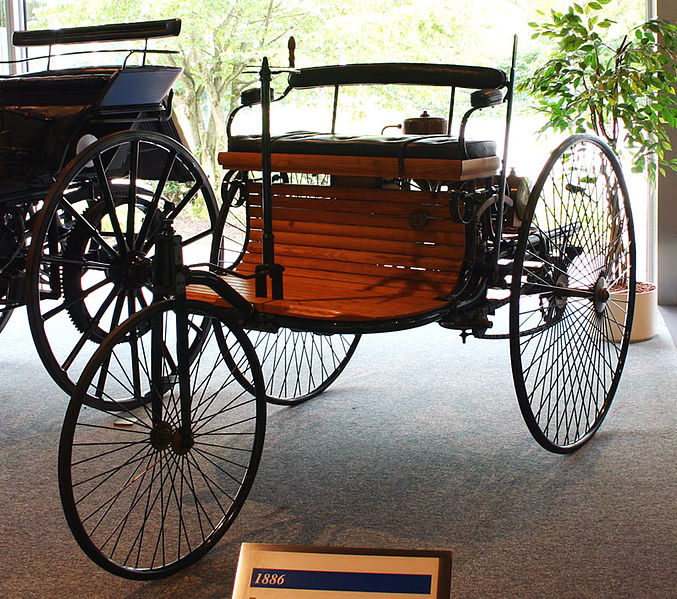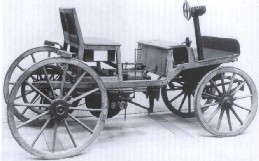 Early attempts at making and using internal combustion engines were hampered by the lack of suitable fuels, particularly liquids, and the earliest engines used gas mixtures.
Early attempts at making and using internal combustion engines were hampered by the lack of suitable fuels, particularly liquids, and the earliest engines used gas mixtures.
Early experimenters using gasses included, in 1806, Swiss engineer François Isaac de Rivaz who built an internal combustion engine powered by a hydrogen and oxygen mixture, and in 1826, Englishman Samuel Brown who tested his hydrogen-fuelled internal combustion engine by using it to propel a vehicle up Shooter's Hill in south east London. Belgian-born Etienne Lenoir's Hippomobile with a hydrogen gas-fuelled one-cylinder internal combustion engine made a test drive from Paris to Joinville-le-Pont in 1860, covering some nine kilometres in about three hours. A later version was propelled by coal gas. A Delamare-Deboutteville vehicle was patented and trialled in 1884.
About 1870, in Vienna, Austria (then the Austro-Hungarian Empire), inventor Siegfried Marcus put a liquid-fueled internal combustion engine on a simple handcart which made him the first man to propel a vehicle by means of gasoline. Today, this car is known as "the first Marcus car". In 1883, Marcus secured a German patent for a low-voltage ignition system of the magneto type: this was his only automotive patent. This design was used for all further engines, and the four-seat "second Marcus car" of 1888/89. This ignition, in conjunction with the "rotating-brush carburetor", made the second car's design very innovative.

It is generally acknowledged that the first really practical automobiles with petrol/gasoline-powered internal combustion engines were completed almost simultaneously by several German inventors working independently: Karl Benz built his first automobile in 1885 in Mannheim. Benz was granted a patent for his automobile on 29 January 1886, and began the first production of automobiles in 1888, after Bertha Benz, his wife, had proved with the first long-distance trip in August 1888 - from Mannheim to Pforzheim and back - that the horseless coach was absolutely suitable for daily use. Since 2008 a Bertha Benz Memorial Route commemorates this event.
Soon after, Gottlieb Daimler and Wilhelm Maybach in Stuttgart in 1889 designed a vehicle from scratch to be an automobile, rather than a horse-drawn carriage fitted with an engine. They also are usually credited as inventors of the first motorcycle in 1886, but Italy's Enrico Bernardi, of the University of Padua, in 1882, patented a 0.024 horsepower (17.9 W) 122 cc (7.4 cu in) one-cylinder petrol motor, fitting it into his son's tricycle, making it at least a candidate for the first automobile, and first motorcycle. Bernardi enlarged the tricycle in 1892 to carry two adults.

One of the first four-wheeled petrol-driven automobiles in Britain was built in Birmingham in 1895 by Frederick William Lanchester, who also patented the disc brake and the first electric starter, was installed on an Arnold, in a copy of the Benz Velo, built between 1895 and 1898.
In all the turmoil, many early pioneers are nearly forgotten. In 1891, John William Lambert built a three-wheeler in Ohio City, Ohio, which was destroyed in a fire the same year, while Henry Nadig constructed a four-wheeler in Allentown, Pennsylvania. It is likely they were not the only ones.
0 comments:
Post a Comment